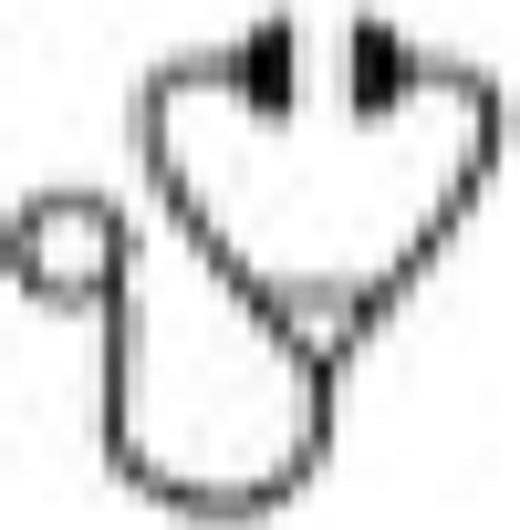Abstract

Background: Although azacitidine (AZA) improves survival over conventional treatments in higher risk MDS (Lancet Oncol, 2009), median overall survival (OS) with AZA is only about 2 years, the CR+PR rate about 30%, and further improvements are needed. Gene hypomethylation appears to be a major mechanism of action of AZA but, with the typical 7 days of administration every 28 days, reversal of gene hypomethylation is seen at the end of each cycle (Braiteh F, Clin Cancer Res 2008), suggesting that increasing the number of treatment days could improve AZA results. This trial tested the hypothesis that an AZA regimen with more days of drug administration (ie using the standard daily dose of 75 mg/m2, but during 5 days every 14 days) could increase the response rate, and that this improvement could translate into better OS.
Methods: Patients (pts) aged 18-75 years with ECOG performance status (PS) of 0-2 and no major comorbidities preventing administration of an intensified regimen of AZA, with IPSS int-2 or high MDS, CMML with WBC < 13,000/mm3 and marrow blasts > 10% , or AML with 20-30% marrow blasts (ie EU label for AZA) who had received no prior treatment for their MDS/AML except ESAs could be included. Treatment consisted of AZA 75mg/m2/d for 5 days every 14 days for 4 cycles (AZA-14, cycles 1-4). Patients achieving CR or PR then received 4 cycles of AZA 75mg/m2/d during 5 days every 21 days (AZA-21, cycles 5 to 8) followed by classical cycles of AZA 75mg/m2/d for 7 days every 28 days, to be continued until progression/relapse or toxicity arose. This schedule corresponded to a 30% increase in the number of days of AZA during the first 3 months of treatment. Patients not obtaining CR or PR after the initial 4 cycles of AZA-14 received 4 additional cycles of AZA 14 (cycles 5 to 8). Patients not obtaining CR, PR or HI after 8 cycles of AZA-14 were excluded from the trial. The primary endpoint was response after 4 and 8 cycles (IWG 2006 criteria). Median [IQR] are reported unless specified.
Results: 27 patients were included, of whom 1 was excluded for consent withdrawal. 26 patients (M/F: 19/7, median age 66) enrolled between 2011 and 2013, were thus analyzed, including 1 ARSI, 2 RCMD, 3 RAEB1, 13 RAEB2, 2 CMML and 5 AML (with 20 to 30% marrow blasts). Karyotype (IPSS) was favorable in 11 pts, intermediate in 6 patients and unfavorable in 9 pts. Median marrow blast was 13.5% (IQR 9.7-18.0), baseline platelet count was 72.5 G/l (43.5-177.0) including 69% with platelet<50 G/L, baseline Hb level was 9.8 g/dl (8.9-10.6), and baseline ANC was 1.2 G/l (0.6-2.3). IPSS was int-1 in 1, int-2 in 16 patients and high in 9 patients. With a median follow-up of 20 months, 342 cycles were administered (median 12/patient, including 23 (88%) patients who received 6 or more cycles). Cycle 2 was performed at a median of 14 (14-14) days after cycle 1 and had to be delayed beyond d15 in only 1 patient. Cycles 3 and 4, scheduled at d28 and d42, were slightly delayed in many pts (and were administered at a median of d35 and d51 from AZA onset). 1 pt terminated the study before cycle 4. Regarding toxicity, 25 SAEs (grade 3-4) were reported in 16 patients, including 21 infectious events, 1 being lethal.
After 4 cycles, 1 achieved CR, 6 PR, 7 marrow CR, 5 stable disease with HI (overall response rate 19/26=73.1%). Overall, after 8 cycles, the ORR was 22/26 (85%), including 4 CR, 6 PR, 11 mCR and 1 stable disease with HI. Median survival was 21 months, while one and 2-year overall survival rates were 73%[95CI: 58%;92%] and 41%[95CI: 25%;66%], respectively.
No prognostic factors for OS, including IPSS (p=0.63), bone marrow blast % (p=0.24), sex (p=0.42), IPSS cytogenetic group (p=0.30) and PS (p=0.64) was found.
Conclusion: In this population of relatively "fit" Higher risk MDS, an intensified schedule of AZA seems feasible without obvious increase in toxicity compared to the classical 7 day schedule of azacitidine. Cycles were delayed in a limited proportion of patients and no extra toxicities were observed. Both the ORR of 85% and the 73% overall survival at 1 year are encouraging.
Guerci-Bresler:ARIAD: Speakers Bureau; BMS: Speakers Bureau; Novartis: Speakers Bureau; PFIZER: Speakers Bureau. Legros:ARIAD: Speakers Bureau; Novartis: Research Funding, Speakers Bureau; BMS: Speakers Bureau. Fenaux:Novartis: Honoraria, Research Funding; Celgene Corporation: Honoraria, Research Funding; Amgen: Honoraria, Research Funding; Janssen: Honoraria, Research Funding.
Author notes
Asterisk with author names denotes non-ASH members.

This icon denotes a clinically relevant abstract

This feature is available to Subscribers Only
Sign In or Create an Account Close Modal